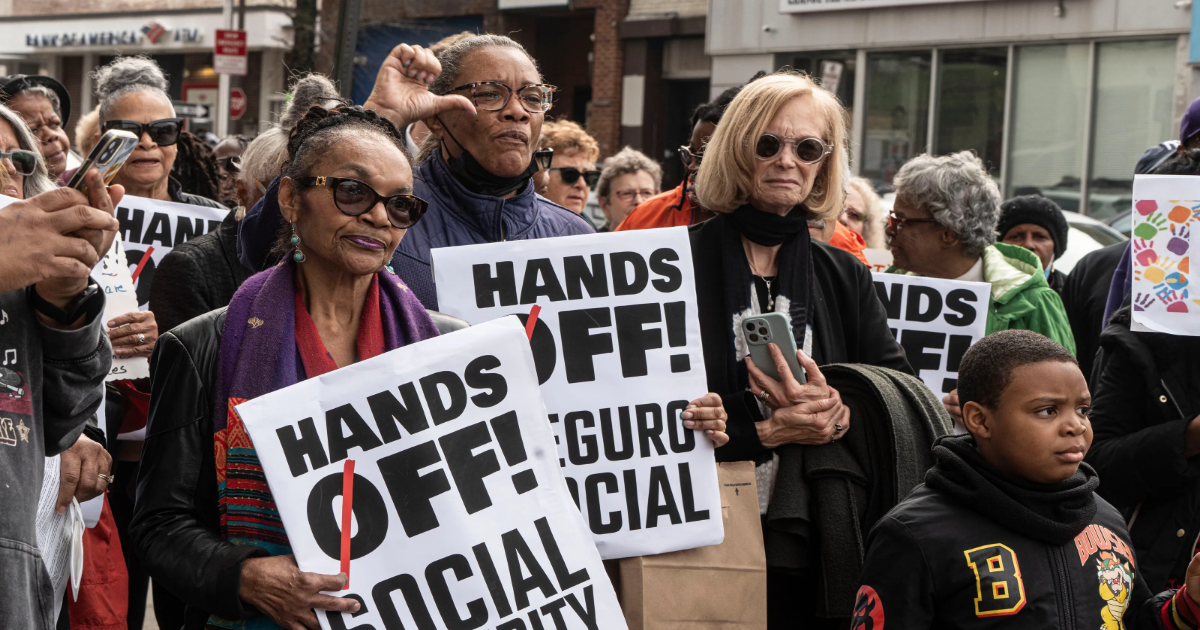
Thousands of people have pledged to gather at hundreds of locations around the country Saturday, including in every congressional district, to voice complaints about President Donald Trump‘s actions since taking office.
The “Hands Off” protests are expected to be the largest and most numerous gatherings since Trump’s second term begin. Nationwide more than 500,000 people have RSVP’d to attend one of 1,000 rallies marches or protests organized by grassroots groups.
For months, large and small activist groups have held protests across the country, protesting at congressional town halls, outside federal office buildings and on street corners over the changes Trump has made since taking office in January.
They’ve protested how Trump has rolled back protections for immigrants and transgender people and laid off tens of thousands of federal workers. Some protests have focused specifically on supporting federal employees, LGBTQ rights, immigrant rights, Palestinian self-determination or Ukraine, while others have demonstrated against Trump’s agenda generally.
The White House has dismissed the protests, with Press Secretary Karoline Leavitt telling USA TODAY this week that “protests, lawsuits, and lawfare” will not sway Trump “from delivering on the promises he made to make our federal government more efficient and more accountable.”
Across the country
Hosting organizations include longstanding groups like Indivisible, Women’s March, MoveOn, Working Families Power, and Public Citizen and grassroots groups like 50501 that have formed since Election Day.
The Washington, D.C. event, expected to be the largest, starts at noon at the Washington Monument. Organizers said they expect it to be much bigger than the People’s March that occurred the weekend before Trump’s second inauguration. The protests will be livestreamed here.
More than 1,200 other protests are planned across the country. Organizers said they wanted to have protests that are not only accessible for people wherever they are in the country, but also highly visible to show that opposition exists in every part of the country.
“I don’t care if I’m on the record as being in the town square with three people, or 300,000 people, or 3 million people protesting it, I want to be on the record. I want the story to say that people protested this and fought it every step of the way, even if the story includes the places where we didn’t win,” said Rachel O’Leary Carmona, executive director of Women’s March.
In February alone, more than 2,085 protests took place nationwide, according to the Crowd Counting Consortium, a joint project of Harvard Kennedy School and the University of Connecticut.
That’s an increase from 937 protests in February 2017, the first full month of the first Trump administration. But many of the protests in the early months of Trump’s first term were much larger than the nation has seen so far in 2025, and there has been less frequent media coverage of protests this year.
More: ‘There’s a movement bubbling up’: Anti-Trump protests planned nationwide Saturday
MoveOn Executive Director Rahna Epting said the goal is to concentrate all of those protests into one day to show how many Americans oppose cuts to critical services and benefits they’ve earned like Medicare.
“Hands Off is like hands off on all these things, not just our services and benefits, but our rights and our freedoms, all of which are being threatened right now, and we’re seeing it every single day,” she said.
(This is a developing story and will be updated.)
